February 26, 2020
Yoga for beginners: how to start your practice?




Are you interested in practicing yoga but don't know where to start? Here we leave you an article focused on yoga for beginners.
Are you interested in practicing yoga but don't know where to start? Here we leave you an article focused on yoga for beginners.
Are you interested in practicing yoga but don't know where to start? Here we leave you an article focused on yoga for beginners.
Are you interested in practicing yoga but don't know where to start? Here we leave you an article focused on yoga for beginners.
Subscribe to our Newsletter for HR leaders
Workplace wellness strategies, success stories, and corporate promotions directly in your inbox.
Subscribe to our Newsletter for HR leaders
Workplace wellness strategies, success stories, and corporate promotions directly in your inbox.
Subscribe to our Newsletter for HR leaders
Workplace wellness strategies, success stories, and corporate promotions directly in your inbox.
Subscribe to our Newsletter for HR leaders
Workplace wellness strategies, success stories, and corporate promotions directly in your inbox.
Yoga is an essential routine for thousands of people around the world. If you are a beginner, this article contains the basics you need to know to familiarize yourself with the topic and take your first steps, or, better said, your first asanas.
What is yoga?
Originally, it emerged as an Eastern discipline of spirituality and meditation, but it later evolved as a discipline for mastering and strengthening the body through asanas or special postures. The latter is the most widespread approach to yoga in the West.
One of the fundamentals of yoga is the coordination of deep and controlled breathing along with a series of movements that can pose a challenge to strength, flexibility, and balance, which forces the mind to become fully aware of the body in the here and now.
Benefits of Yoga
Yoga is a low-impact exercise, which does not mean it is easy, but rather that the movements and postures performed, when done correctly, do not endanger the joints or tendons, unlike other activities such as running or contact sports.
Yoga is also an ideal option for those who want to relax and focus the mind while exercising. Among the main benefits of yoga, we can mention:
Helps strengthen muscles and gain flexibility
Promotes targeted fat burning
Combats depression and irritability
Improves sleep and regulates appetite
Counteracts stress and anxiety
What type of yoga is best?
There are two main types of yoga as a physical conditioning discipline:
Hatha Yoga: Ideal for beginners and the most common. It focuses on creating chains of postures or asanas in a slow and controlled manner.
Vinyasa Yoga: This practice is very similar to hatha yoga, except that the movements are more dynamic, the postures are held for less time, and it is closer to cardiovascular exercise. It's a great option for people who are already in good physical condition and have little patience.
What do I need to start practicing yoga?
The basic guidelines and requirements for any yoga practice are as follows:
A mat or mat with good density and non-slip properties to protect your joints. The thicker (not padded) and more non-slip it is, the better, as these are two qualities that prevent accidents and injuries. There are many tools for yoga practice, but this is the only essential one.
Wear comfortable clothing. It does not have to be specialized sports clothing for yoga; it just needs to allow for free and wide movement of the limbs and not be tight in any area.
Hydrate properly: drink at least a glass of water before starting the practice, and one afterward.
A quiet space with enough room for your mat to be at least half a meter away from the walls or furniture on each side.
Optionally, you can play soft instrumental music or relaxation sounds.
1.- Find a suitable guide
Nowadays, you don’t necessarily have to attend a yoga teacher for live classes: there are countless tutorials on YouTube with which you can start. However, note that this kind of support works for beginner yoga but not necessarily for intermediate and advanced levels.
Here’s an example of a special video for beginners with all the instructions to get started.
2.- Relax before and after
One of the fundamentals of yoga is relaxation and conscious breathing before and after practice. This is a step we should never skip, as it helps us reach a level of breathing and a proper posture to both initiate physical effort and allow the muscles to rest.
3.- Don’t overdo it
Yoga should never hurt; it is not normal to feel any kind of discomfort or pain. While it's true that this practice involves a considerable amount of effort, discipline, and will, there is also a clear difference between a muscle that is working and one that is being injured. For some, this line can be very subtle, which is why we should always start gradually and, above all, listen carefully to what our body is trying to tell us.
4.- Be patient
The results of yoga should be obtained gradually through consistency. It is preferable to practice a position briefly over five or six weeks than to attempt to achieve it through intensive practices in one or two weeks.
5.- Be disciplined
Regardless of whether you practice yoga at home, in a specialized center, or even take a break from work to do yoga in the office, the basic thing is to be clear that to obtain the benefits of this practice, you must be truly disciplined.
Just practice for half an hour four or five days a week. You can even alternate your practices with other sports - like swimming or Zumba - but always giving yourself time to invest in yourself, your health, and your physical and mental peace.
Contraindications of Yoga
As it is a controlled low-impact exercise, yoga has very few contraindications beyond the limitations that certain injuries or specific conditions may imply. For example, several of the postures or asanas are not recommended for people with sciatica or herniated discs. If you have any condition, it's best to consult your doctor before starting yoga.
At Zen to Go, we want to help you have a healthy lifestyle, full of well-being while always taking care of what matters most: you.
Yoga is an essential routine for thousands of people around the world. If you are a beginner, this article contains the basics you need to know to familiarize yourself with the topic and take your first steps, or, better said, your first asanas.
What is yoga?
Originally, it emerged as an Eastern discipline of spirituality and meditation, but it later evolved as a discipline for mastering and strengthening the body through asanas or special postures. The latter is the most widespread approach to yoga in the West.
One of the fundamentals of yoga is the coordination of deep and controlled breathing along with a series of movements that can pose a challenge to strength, flexibility, and balance, which forces the mind to become fully aware of the body in the here and now.
Benefits of Yoga
Yoga is a low-impact exercise, which does not mean it is easy, but rather that the movements and postures performed, when done correctly, do not endanger the joints or tendons, unlike other activities such as running or contact sports.
Yoga is also an ideal option for those who want to relax and focus the mind while exercising. Among the main benefits of yoga, we can mention:
Helps strengthen muscles and gain flexibility
Promotes targeted fat burning
Combats depression and irritability
Improves sleep and regulates appetite
Counteracts stress and anxiety
What type of yoga is best?
There are two main types of yoga as a physical conditioning discipline:
Hatha Yoga: Ideal for beginners and the most common. It focuses on creating chains of postures or asanas in a slow and controlled manner.
Vinyasa Yoga: This practice is very similar to hatha yoga, except that the movements are more dynamic, the postures are held for less time, and it is closer to cardiovascular exercise. It's a great option for people who are already in good physical condition and have little patience.
What do I need to start practicing yoga?
The basic guidelines and requirements for any yoga practice are as follows:
A mat or mat with good density and non-slip properties to protect your joints. The thicker (not padded) and more non-slip it is, the better, as these are two qualities that prevent accidents and injuries. There are many tools for yoga practice, but this is the only essential one.
Wear comfortable clothing. It does not have to be specialized sports clothing for yoga; it just needs to allow for free and wide movement of the limbs and not be tight in any area.
Hydrate properly: drink at least a glass of water before starting the practice, and one afterward.
A quiet space with enough room for your mat to be at least half a meter away from the walls or furniture on each side.
Optionally, you can play soft instrumental music or relaxation sounds.
1.- Find a suitable guide
Nowadays, you don’t necessarily have to attend a yoga teacher for live classes: there are countless tutorials on YouTube with which you can start. However, note that this kind of support works for beginner yoga but not necessarily for intermediate and advanced levels.
Here’s an example of a special video for beginners with all the instructions to get started.
2.- Relax before and after
One of the fundamentals of yoga is relaxation and conscious breathing before and after practice. This is a step we should never skip, as it helps us reach a level of breathing and a proper posture to both initiate physical effort and allow the muscles to rest.
3.- Don’t overdo it
Yoga should never hurt; it is not normal to feel any kind of discomfort or pain. While it's true that this practice involves a considerable amount of effort, discipline, and will, there is also a clear difference between a muscle that is working and one that is being injured. For some, this line can be very subtle, which is why we should always start gradually and, above all, listen carefully to what our body is trying to tell us.
4.- Be patient
The results of yoga should be obtained gradually through consistency. It is preferable to practice a position briefly over five or six weeks than to attempt to achieve it through intensive practices in one or two weeks.
5.- Be disciplined
Regardless of whether you practice yoga at home, in a specialized center, or even take a break from work to do yoga in the office, the basic thing is to be clear that to obtain the benefits of this practice, you must be truly disciplined.
Just practice for half an hour four or five days a week. You can even alternate your practices with other sports - like swimming or Zumba - but always giving yourself time to invest in yourself, your health, and your physical and mental peace.
Contraindications of Yoga
As it is a controlled low-impact exercise, yoga has very few contraindications beyond the limitations that certain injuries or specific conditions may imply. For example, several of the postures or asanas are not recommended for people with sciatica or herniated discs. If you have any condition, it's best to consult your doctor before starting yoga.
At Zen to Go, we want to help you have a healthy lifestyle, full of well-being while always taking care of what matters most: you.
Yoga is an essential routine for thousands of people around the world. If you are a beginner, this article contains the basics you need to know to familiarize yourself with the topic and take your first steps, or, better said, your first asanas.
What is yoga?
Originally, it emerged as an Eastern discipline of spirituality and meditation, but it later evolved as a discipline for mastering and strengthening the body through asanas or special postures. The latter is the most widespread approach to yoga in the West.
One of the fundamentals of yoga is the coordination of deep and controlled breathing along with a series of movements that can pose a challenge to strength, flexibility, and balance, which forces the mind to become fully aware of the body in the here and now.
Benefits of Yoga
Yoga is a low-impact exercise, which does not mean it is easy, but rather that the movements and postures performed, when done correctly, do not endanger the joints or tendons, unlike other activities such as running or contact sports.
Yoga is also an ideal option for those who want to relax and focus the mind while exercising. Among the main benefits of yoga, we can mention:
Helps strengthen muscles and gain flexibility
Promotes targeted fat burning
Combats depression and irritability
Improves sleep and regulates appetite
Counteracts stress and anxiety
What type of yoga is best?
There are two main types of yoga as a physical conditioning discipline:
Hatha Yoga: Ideal for beginners and the most common. It focuses on creating chains of postures or asanas in a slow and controlled manner.
Vinyasa Yoga: This practice is very similar to hatha yoga, except that the movements are more dynamic, the postures are held for less time, and it is closer to cardiovascular exercise. It's a great option for people who are already in good physical condition and have little patience.
What do I need to start practicing yoga?
The basic guidelines and requirements for any yoga practice are as follows:
A mat or mat with good density and non-slip properties to protect your joints. The thicker (not padded) and more non-slip it is, the better, as these are two qualities that prevent accidents and injuries. There are many tools for yoga practice, but this is the only essential one.
Wear comfortable clothing. It does not have to be specialized sports clothing for yoga; it just needs to allow for free and wide movement of the limbs and not be tight in any area.
Hydrate properly: drink at least a glass of water before starting the practice, and one afterward.
A quiet space with enough room for your mat to be at least half a meter away from the walls or furniture on each side.
Optionally, you can play soft instrumental music or relaxation sounds.
1.- Find a suitable guide
Nowadays, you don’t necessarily have to attend a yoga teacher for live classes: there are countless tutorials on YouTube with which you can start. However, note that this kind of support works for beginner yoga but not necessarily for intermediate and advanced levels.
Here’s an example of a special video for beginners with all the instructions to get started.
2.- Relax before and after
One of the fundamentals of yoga is relaxation and conscious breathing before and after practice. This is a step we should never skip, as it helps us reach a level of breathing and a proper posture to both initiate physical effort and allow the muscles to rest.
3.- Don’t overdo it
Yoga should never hurt; it is not normal to feel any kind of discomfort or pain. While it's true that this practice involves a considerable amount of effort, discipline, and will, there is also a clear difference between a muscle that is working and one that is being injured. For some, this line can be very subtle, which is why we should always start gradually and, above all, listen carefully to what our body is trying to tell us.
4.- Be patient
The results of yoga should be obtained gradually through consistency. It is preferable to practice a position briefly over five or six weeks than to attempt to achieve it through intensive practices in one or two weeks.
5.- Be disciplined
Regardless of whether you practice yoga at home, in a specialized center, or even take a break from work to do yoga in the office, the basic thing is to be clear that to obtain the benefits of this practice, you must be truly disciplined.
Just practice for half an hour four or five days a week. You can even alternate your practices with other sports - like swimming or Zumba - but always giving yourself time to invest in yourself, your health, and your physical and mental peace.
Contraindications of Yoga
As it is a controlled low-impact exercise, yoga has very few contraindications beyond the limitations that certain injuries or specific conditions may imply. For example, several of the postures or asanas are not recommended for people with sciatica or herniated discs. If you have any condition, it's best to consult your doctor before starting yoga.
At Zen to Go, we want to help you have a healthy lifestyle, full of well-being while always taking care of what matters most: you.
Yoga is an essential routine for thousands of people around the world. If you are a beginner, this article contains the basics you need to know to familiarize yourself with the topic and take your first steps, or, better said, your first asanas.
What is yoga?
Originally, it emerged as an Eastern discipline of spirituality and meditation, but it later evolved as a discipline for mastering and strengthening the body through asanas or special postures. The latter is the most widespread approach to yoga in the West.
One of the fundamentals of yoga is the coordination of deep and controlled breathing along with a series of movements that can pose a challenge to strength, flexibility, and balance, which forces the mind to become fully aware of the body in the here and now.
Benefits of Yoga
Yoga is a low-impact exercise, which does not mean it is easy, but rather that the movements and postures performed, when done correctly, do not endanger the joints or tendons, unlike other activities such as running or contact sports.
Yoga is also an ideal option for those who want to relax and focus the mind while exercising. Among the main benefits of yoga, we can mention:
Helps strengthen muscles and gain flexibility
Promotes targeted fat burning
Combats depression and irritability
Improves sleep and regulates appetite
Counteracts stress and anxiety
What type of yoga is best?
There are two main types of yoga as a physical conditioning discipline:
Hatha Yoga: Ideal for beginners and the most common. It focuses on creating chains of postures or asanas in a slow and controlled manner.
Vinyasa Yoga: This practice is very similar to hatha yoga, except that the movements are more dynamic, the postures are held for less time, and it is closer to cardiovascular exercise. It's a great option for people who are already in good physical condition and have little patience.
What do I need to start practicing yoga?
The basic guidelines and requirements for any yoga practice are as follows:
A mat or mat with good density and non-slip properties to protect your joints. The thicker (not padded) and more non-slip it is, the better, as these are two qualities that prevent accidents and injuries. There are many tools for yoga practice, but this is the only essential one.
Wear comfortable clothing. It does not have to be specialized sports clothing for yoga; it just needs to allow for free and wide movement of the limbs and not be tight in any area.
Hydrate properly: drink at least a glass of water before starting the practice, and one afterward.
A quiet space with enough room for your mat to be at least half a meter away from the walls or furniture on each side.
Optionally, you can play soft instrumental music or relaxation sounds.
1.- Find a suitable guide
Nowadays, you don’t necessarily have to attend a yoga teacher for live classes: there are countless tutorials on YouTube with which you can start. However, note that this kind of support works for beginner yoga but not necessarily for intermediate and advanced levels.
Here’s an example of a special video for beginners with all the instructions to get started.
2.- Relax before and after
One of the fundamentals of yoga is relaxation and conscious breathing before and after practice. This is a step we should never skip, as it helps us reach a level of breathing and a proper posture to both initiate physical effort and allow the muscles to rest.
3.- Don’t overdo it
Yoga should never hurt; it is not normal to feel any kind of discomfort or pain. While it's true that this practice involves a considerable amount of effort, discipline, and will, there is also a clear difference between a muscle that is working and one that is being injured. For some, this line can be very subtle, which is why we should always start gradually and, above all, listen carefully to what our body is trying to tell us.
4.- Be patient
The results of yoga should be obtained gradually through consistency. It is preferable to practice a position briefly over five or six weeks than to attempt to achieve it through intensive practices in one or two weeks.
5.- Be disciplined
Regardless of whether you practice yoga at home, in a specialized center, or even take a break from work to do yoga in the office, the basic thing is to be clear that to obtain the benefits of this practice, you must be truly disciplined.
Just practice for half an hour four or five days a week. You can even alternate your practices with other sports - like swimming or Zumba - but always giving yourself time to invest in yourself, your health, and your physical and mental peace.
Contraindications of Yoga
As it is a controlled low-impact exercise, yoga has very few contraindications beyond the limitations that certain injuries or specific conditions may imply. For example, several of the postures or asanas are not recommended for people with sciatica or herniated discs. If you have any condition, it's best to consult your doctor before starting yoga.
At Zen to Go, we want to help you have a healthy lifestyle, full of well-being while always taking care of what matters most: you.
You may also be interested in
Discover Our Home Services
💆 Massages and facials at home in various cities in Mexico 🌟
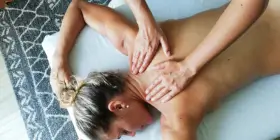
Swedish Massage
The relaxing massage combines gentle movements to release tension and calm the body and mind.
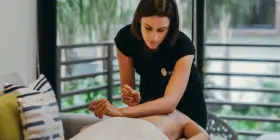
Deep Tissue Massage
Deep tissue massage uses firm pressure and slow techniques to work on the deeper layers of muscle.

Sports Massage
Sports massage combines specialized techniques to prevent injuries, relieve tension, and optimize muscle recovery.
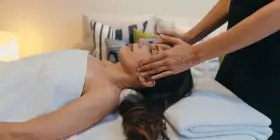
Lymphatic Drainage Massage
Lymphatic drainage massage uses gentle, rhythmic movements to stimulate the lymphatic system, reduce fluid retention, and detoxify the body.
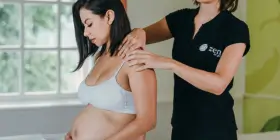
Prenatal Massage
Prenatal massage relieves tension, reduces swelling, and improves the well-being of both the mother and the baby using safe techniques adapted for pregnancy.
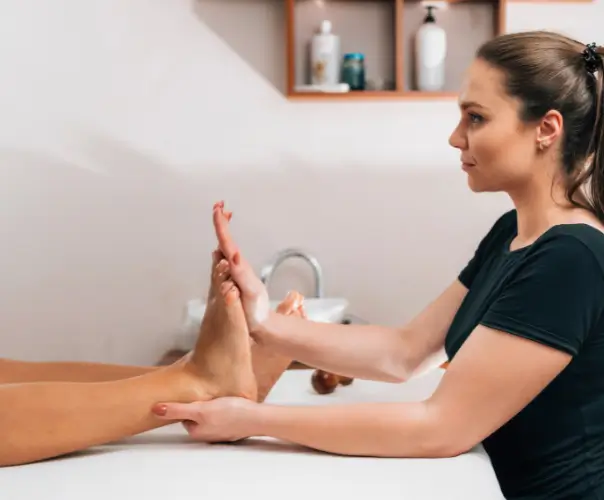
Reflexology
Reflexology uses the stimulation of specific points to promote relaxation, improve circulation, and balance overall well-being.
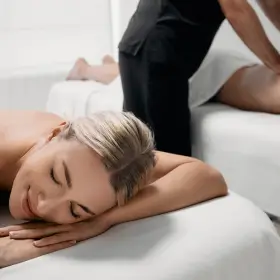
Couples Massage
Custom pressure for each. Ideal for couples looking to reduce stress and enjoy well-being at home.

Fiesta SPA
Experience an unforgettable time with massages and facials, perfect for relaxing with your friends at your spa party or event.
Discover Our Home Services
💆 Massages and facials at home in various cities in Mexico 🌟

Swedish Massage
The relaxing massage combines gentle movements to release tension and calm the body and mind.

Deep Tissue Massage
Deep tissue massage uses firm pressure and slow techniques to work on the deeper layers of muscle.

Sports Massage
Sports massage combines specialized techniques to prevent injuries, relieve tension, and optimize muscle recovery.

Lymphatic Drainage Massage
Lymphatic drainage massage uses gentle, rhythmic movements to stimulate the lymphatic system, reduce fluid retention, and detoxify the body.

Prenatal Massage
Prenatal massage relieves tension, reduces swelling, and improves the well-being of both the mother and the baby using safe techniques adapted for pregnancy.

Reflexology
Reflexology uses the stimulation of specific points to promote relaxation, improve circulation, and balance overall well-being.

Couples Massage
Custom pressure for each. Ideal for couples looking to reduce stress and enjoy well-being at home.

Fiesta SPA
Experience an unforgettable time with massages and facials, perfect for relaxing with your friends at your spa party or event.
Discover Our Home Services
💆 Massages and facials at home in various cities in Mexico 🌟

Swedish Massage
The relaxing massage combines gentle movements to release tension and calm the body and mind.

Deep Tissue Massage
Deep tissue massage uses firm pressure and slow techniques to work on the deeper layers of muscle.

Sports Massage
Sports massage combines specialized techniques to prevent injuries, relieve tension, and optimize muscle recovery.

Lymphatic Drainage Massage
Lymphatic drainage massage uses gentle, rhythmic movements to stimulate the lymphatic system, reduce fluid retention, and detoxify the body.

Prenatal Massage
Prenatal massage relieves tension, reduces swelling, and improves the well-being of both the mother and the baby using safe techniques adapted for pregnancy.

Reflexology
Reflexology uses the stimulation of specific points to promote relaxation, improve circulation, and balance overall well-being.

Couples Massage
Custom pressure for each. Ideal for couples looking to reduce stress and enjoy well-being at home.

Fiesta SPA
Experience an unforgettable time with massages and facials, perfect for relaxing with your friends at your spa party or event.
Discover Our Home Services
💆 Massages and facials at home in various cities in Mexico 🌟

Swedish Massage
The relaxing massage combines gentle movements to release tension and calm the body and mind.

Deep Tissue Massage
Deep tissue massage uses firm pressure and slow techniques to work on the deeper layers of muscle.

Sports Massage
Sports massage combines specialized techniques to prevent injuries, relieve tension, and optimize muscle recovery.

Lymphatic Drainage Massage
Lymphatic drainage massage uses gentle, rhythmic movements to stimulate the lymphatic system, reduce fluid retention, and detoxify the body.

Prenatal Massage
Prenatal massage relieves tension, reduces swelling, and improves the well-being of both the mother and the baby using safe techniques adapted for pregnancy.

Reflexology
Reflexology uses the stimulation of specific points to promote relaxation, improve circulation, and balance overall well-being.

Couples Massage
Custom pressure for each. Ideal for couples looking to reduce stress and enjoy well-being at home.

Fiesta SPA
Experience an unforgettable time with massages and facials, perfect for relaxing with your friends at your spa party or event.
Schedule My Home Massage
Our customer service often exceeds expectations, providing an unmatched experience.
Certified therapists from the best SPAs in the city
No penalties if you cancel 24 hours before your service.
7 out of 10 local customers return and become frequent customers.
Schedule My Home Massage
Our customer service often exceeds expectations, providing an unmatched experience.
Certified therapists from the best SPAs in the city
No penalties if you cancel 24 hours before your service.
7 out of 10 local customers return and become frequent customers.
Schedule My Home Massage
Our customer service often exceeds expectations, providing an unmatched experience.
Certified therapists from the best SPAs in the city
No penalties if you cancel 24 hours before your service.
7 out of 10 local customers return and become frequent customers.
Schedule My Home Massage
Our customer service often exceeds expectations, providing an unmatched experience.
Certified therapists from the best SPAs in the city
No penalties if you cancel 24 hours before your service.
7 out of 10 local customers return and become frequent customers.

We are Home Wellness. We connect you with the best therapists in the city conveniently and securely, so you can say goodbye to stress.
Contact us via your preferred channel:
Work with us
Services
© 2019-2025 Zen to Go™. All rights reserved. Zen to Go is a registered trademark of Plataformas Zen México SA de CV.
Calle 38 Entre Av. 10 y 10 BIS, Local 12, Zazil-Ha, Playa del Carmen, Quintana Roo, CP 77720, México.

We are Home Wellness. We connect you with the best therapists in the city conveniently and securely, so you can say goodbye to stress.
Contact us via your preferred channel:
Work with us
Services
© 2019-2025 Zen to Go™. All rights reserved. Zen to Go is a registered trademark of Plataformas Zen México SA de CV.
Calle 38 Entre Av. 10 y 10 BIS, Local 12, Zazil-Ha, Playa del Carmen, Quintana Roo, CP 77720, México.

We are Home Wellness. We connect you with the best therapists in the city conveniently and securely, so you can say goodbye to stress.
Contact us via your preferred channel:
Work with us
Services
© 2019-2025 Zen to Go™. All rights reserved. Zen to Go is a registered trademark of Plataformas Zen México SA de CV.
Calle 38 Entre Av. 10 y 10 BIS, Local 12, Zazil-Ha, Playa del Carmen, Quintana Roo, CP 77720, México.

We are Home Wellness. We connect you with the best therapists in the city conveniently and securely, so you can say goodbye to stress.
Contact us via your preferred channel:
Work with us
Services
© 2019-2025 Zen to Go™. All rights reserved. Zen to Go is a registered trademark of Plataformas Zen México SA de CV.
Calle 38 Entre Av. 10 y 10 BIS, Local 12, Zazil-Ha, Playa del Carmen, Quintana Roo, CP 77720, México.



